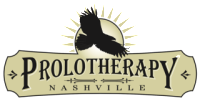Is PRP the best option for treatment of joint pain?
A strong case could be made that PRP is the best overall choice for treatment of most painful joint conditions (for everything except rheumatoid arthritis, gout, infections, or collagen-vascular diseases like psoriatic arthritis). This would include patients in whom total joint replacement has been recommended. This is because PRP addresses the most important cause of pain in most painful joints—the ligament and tendon structures—and also the most mentioned cause of joint pain, which is loss of cartilage. And it also addresses the most important unrecognized factor, which is the ligament laxity that is allowing abnormal abrasive forces within the joint to cause whatever cartilage damage is noted.
PRP is the most effective and powerful triggering strategy for the connective tissue healing system, which produces new collagen molecules to strengthen ligament and tendon structures, which when adequate additional strength is produced in ligaments and tendons will stop stretch induced small fiber nerve damage, which will then eliminate both tenderness and symptom production in these structures. And perhaps most important in the long run, in addition to resolving pain from these structures, returning these structures to adequate tensile strength and correct length corrects the dynamic that caused damage to the cartilage surfaces to begin with. As mentioned above, it has been shown that the growth factors released by the white cells are capable of growing new cartilage, and we know that stem cells are active in this regard.
So PRP, when administered based upon an understanding of the various factors involved in creating symptoms, cartilage loss, bony changes, and even Baker’s Cysts, can produce excellent results in this patient population. It is capable of addressing every factor that causes symptoms, and of reversing the factors that cause cartilage loss and bony changes. So PRP not only obtains excellent short term results, but the results obtained with PRP can reasonably be expected to be very long-lasting. We have found in our own patient population that, absent a specific re-injury, our knees treated with Platelet Rich Plasma have a higher percentage of being 100% pain free four years after treatment than one year after treatment. What does this mean? That we were able to reverse the factors that caused these knees to deteriorate, and the knees actually continued to repair themselves effectively ongoing, and further reduce symptoms.
